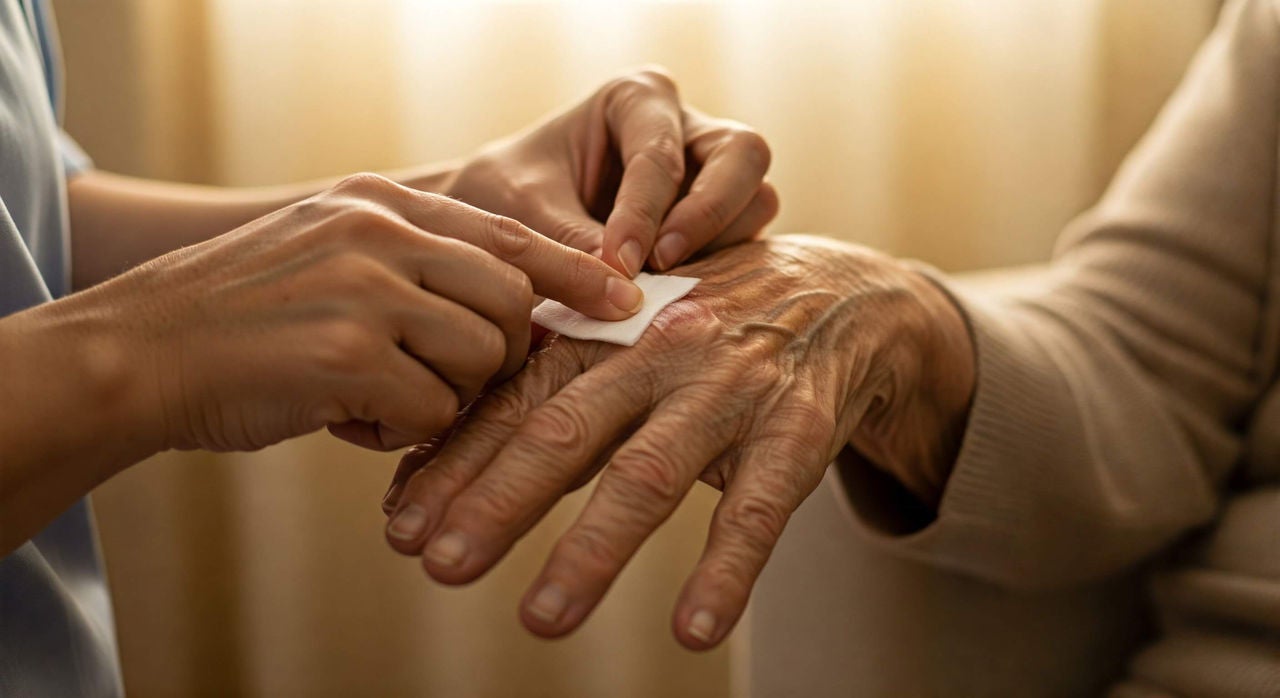Introduction
As we age, our bodies go through a variety of changes, and one of the most significant areas affected is the skin. For older adults, wound healing becomes slower and more complicated due to changes in skin structure, decreased blood flow, and other age-related factors. **Skin aging** causes a reduction in the skin’s elasticity, moisture retention, and its ability to regenerate, which can lead to prolonged healing times and an increased risk of infection and scarring.
In this article, we will discuss the challenges of wound healing in the elderly and provide practical tips for improving recovery in older adults. We’ll also highlight some advanced treatments that can help address these challenges and promote better healing outcomes.
How Aging Affects Wound Healing
As people age, several factors contribute to delayed wound healing:
- Thinning Skin: The epidermis (outer layer of the skin) becomes thinner with age, which can make it more susceptible to injury.
- Reduced Blood Flow: Poor circulation in the elderly limits the delivery of oxygen and nutrients to the wound site, which can slow down the healing process.
- Slower Cell Regeneration: As we age, the rate of cell turnover and regeneration decreases, meaning it takes longer for new skin cells to form and close the wound.
- Weakened Immune System: The immune system becomes less effective with age, which increases the risk of infection in open wounds.
Common Wound Types in the Elderly
Older adults are more prone to certain types of wounds, including:
- Pressure Ulcers: Also known as bedsores, these occur when prolonged pressure on the skin reduces blood flow, leading to tissue breakdown.
- Diabetic Foot Ulcers: People with diabetes are more prone to foot ulcers due to poor circulation and nerve damage.
- Venous Ulcers: These are typically found on the lower legs and are caused by poor blood circulation.
How to Promote Faster Wound Healing in the Elderly
While aging presents unique challenges for wound healing, there are several ways to improve recovery and reduce the risk of complications:
- Proper Nutrition: A diet rich in protein, vitamins (especially vitamin C and zinc), and minerals is essential for wound healing.
- Hydration: Dehydrated skin is more prone to breakdown and takes longer to heal. Ensure the elderly person is drinking enough fluids to keep the skin hydrated.
- Proper Wound Care: Clean and dress wounds regularly to avoid infection and maintain a healthy healing environment. Use advanced wound care products as necessary.
- Encourage Movement: Ensure that the elderly person is moving regularly to prevent pressure ulcers and promote circulation.
Advanced Wound Care Options
There are several advanced treatment options that can aid wound healing in the elderly:
- Negative Pressure Wound Therapy (NPWT): This therapy uses a vacuum dressing to help draw out fluid and promote tissue growth.
- Skin Substitutes: Biological dressings made from human, animal, or synthetic materials can promote healing in severe or chronic wounds.
- Growth Factor Therapy: Topical application of growth factors can stimulate the production of new tissue and speed up healing.
Conclusion
Wound healing in the elderly presents unique challenges, but with the right care and attention, older adults can recover effectively. By focusing on nutrition, proper wound care, and advanced treatment options, caregivers can improve healing outcomes and help the elderly regain strength and mobility. With the right approach, even the most challenging wounds can be healed efficiently, improving the overall quality of life for elderly individuals.

